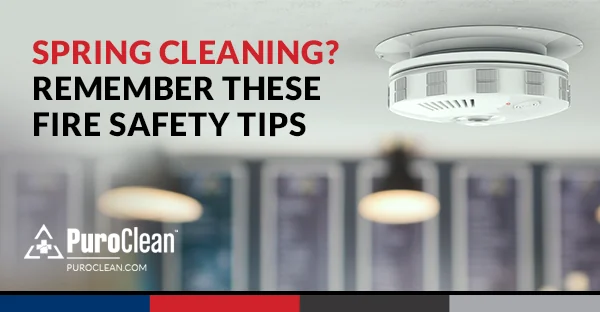Table of Contents
Introduction
Electrical fires are one of the leading causes of home fires and can occur suddenly, often without warning. These fires can spread rapidly, causing immense damage to property and posing a significant threat to life. According to the U.S. Fire Administration, electrical malfunctions are responsible for around 6% of all residential building fires, resulting in hundreds of deaths and billions of dollars in damage annually.
In this comprehensive guide, we’ll explore the most common causes of electrical fires, how to recognize early warning signs, and essential prevention strategies to help you safeguard your home from these devastating events.
Understanding the Risk of Electrical Fires
Electrical fires often result from various issues that can go unnoticed until it’s too late. Electrical systems age over time, and without proper maintenance, they become prone to malfunction. Homes with outdated wiring or electrical panels are at particular risk. Additionally, modern lifestyles demand increased power usage, with more devices and appliances plugged in than ever before, often overburdening existing electrical systems.
Being aware of the common causes and adopting prevention measures can significantly reduce the risk of an electrical fire in your home.
The Common Causes of Electrical Fires
Understanding what causes electrical fires is the first step in preventing them. Here are the most common triggers:

2.1. Faulty Wiring
Faulty or deteriorated wiring is one of the primary causes of electrical fires. Over time, electrical wiring can degrade, particularly in homes over 20 to 30 years old. Insulation around wires may fray or become brittle, exposing live wires. Rodents or pests can also damage wiring, increasing the risk of short circuits and fires.
Prevention Tip: If your home is older or if you frequently experience blown fuses or tripped breakers, have a licensed electrician inspect your wiring for damage or outdated materials.
2.2. Overloaded Circuits
Circuits are designed to handle a specific electrical load. When too many appliances or devices are plugged into a single circuit, it can become overloaded, leading to overheating and potential fire hazards. This is particularly common in older homes where the electrical system may not be equipped to handle the demands of modern devices.
Prevention Tip: Spread out your devices and avoid plugging too many high-energy appliances into the same outlet. Consider upgrading your home’s electrical system to better accommodate modern usage.
2.3. Outdated Electrical Panels
Older homes may have outdated electrical panels that are no longer adequate for today’s power demands. Electrical panels are the control centers of your home’s electrical system, and outdated panels (such as those using fuses instead of breakers) may not offer adequate protection from electrical overloads.
Prevention Tip: If your home has an old fuse box or a panel that hasn’t been updated in decades, contact an electrician to discuss upgrading it to a modern breaker panel.
2.4. Misuse of Extension Cords and Power Strips
Using extension cords and power strips to connect multiple devices to a single outlet can lead to overloads, overheating, and eventually fires. Additionally, running extension cords under carpets or through walls can create hidden dangers, as the heat buildup from these cords may not be properly dissipated.
Prevention Tip: Use extension cords and power strips sparingly, and never connect high-wattage appliances like space heaters or microwaves to them. Always ensure that cords are rated for the intended usage.
2.5. Defective or Aging Appliances
Older appliances, especially those with damaged power cords or internal wiring issues, can cause electrical fires. As appliances age, they may develop short circuits, worn-out motors, or other electrical malfunctions that pose a fire hazard.
Prevention Tip: Regularly inspect your appliances, especially large ones like refrigerators, washing machines, and stoves. Replace appliances that show signs of electrical problems or consider upgrading them to modern, energy-efficient models.
2.6. Improper Use of Electrical Outlets
Plugging devices into outlets that aren’t equipped to handle them can cause overheating. This issue is common with appliances like air conditioners or space heaters. Additionally, forcing plugs into worn-out outlets or using outlets that spark when plugging in devices are clear fire hazards.
Prevention Tip: If outlets are loose, sparking, or frequently overheating, replace them. Also, consider installing ground-fault circuit interrupters (GFCIs) in areas prone to moisture, such as kitchens, bathrooms, and basements.
2.7. Space Heaters and High-Power Devices
Space heaters are notorious for causing electrical fires, especially when placed too close to flammable materials like curtains, furniture, or bedding. These devices draw significant amounts of electricity, and faulty or outdated models can overheat or short-circuit.
Prevention Tip: Always use space heaters with an automatic shut-off feature and never leave them unattended. Keep them at least three feet away from flammable objects and plug them directly into a wall outlet, never a power strip.
2.8. Electrical Lighting Issues
Overheating light bulbs or using bulbs with wattage exceeding the fixture’s specifications can also cause fires. In addition, faulty light switches or fixtures with frayed wiring can create electrical sparks.
Prevention Tip: Always check the recommended wattage for light fixtures and never exceed it. Regularly inspect switches and fixtures for signs of wear or malfunction, and replace them as necessary.
The Warning Signs of Electrical Fire Hazards
Knowing the early warning signs of an electrical issue can help prevent fires before they start. Here are some key indicators that something may be wrong:
- Frequent circuit breaker trips: If your breakers are constantly tripping, this may indicate an overloaded or faulty electrical system.
- Flickering or dimming lights: Lights that flicker or dim unexpectedly can indicate poor electrical connections or overloaded circuits.
- Burning smells: If you notice the smell of burning plastic or wires, it’s a strong sign that something is overheating and poses a fire risk.
- Warm or discolored outlets: Outlets or switches that feel warm to the touch or show signs of discoloration may be overheating.
- Sparks from outlets: Sparks when plugging or unplugging devices should never be ignored, as this can signal serious electrical problems.
- Buzzing sounds: Unusual buzzing noises coming from outlets, switches, or electrical panels are signs of malfunctioning components.
If you notice any of these signs, it’s essential to contact a licensed electrician immediately for a thorough inspection.
The Essential Electrical Fire Prevention Tips
Preventing electrical fires involves being proactive about maintaining your home’s electrical system. Here are some essential tips to follow:
4.1. Schedule Regular Electrical Inspections
Homes, especially those older than 20 years, should undergo regular inspections to ensure wiring, outlets, and the electrical panel are up to code and functioning safely.
4.2. Avoid Overloading Circuits
Do not overload electrical circuits by plugging too many high-power appliances into a single outlet or circuit. Spread out your usage across different circuits and outlets.
4.3. Replace Damaged Wiring
Frayed, exposed, or damaged wiring should be replaced immediately. Never attempt DIY fixes on electrical wiring unless you are qualified.
4.4. Use the Right Bulbs
Always use bulbs with the correct wattage for your light fixtures. Check the manufacturer’s recommendations to avoid overloading.
4.5. Unplug Appliances When Not in Use
When appliances like toasters, microwaves, or space heaters are not in use, unplug them to prevent unnecessary electrical flow and reduce fire risk.
4.6. Install Smoke Detectors
Install smoke detectors in every room of the house, particularly near bedrooms, kitchens, and areas with high electricity usage. Test them monthly and replace batteries as needed.
4.7. Upgrade to Modern Safety Devices
If your home lacks Ground Fault Circuit Interrupters (GFCIs) or Arc Fault Circuit Interrupters (AFCIs), consider having an electrician install them. These devices automatically shut off power when they detect faults that could lead to fires.
The Things to Do in the Event of an Electrical Fire
If you ever face an electrical fire, it’s essential to act quickly but safely:
- Do not use water: Never use water to extinguish an electrical fire, as water conducts electricity and can make the situation worse.
- Use a fire extinguisher: Use a Class C fire extinguisher, which is specifically designed for electrical fires.
- Shut off power: If it’s safe to do so, shut off the main power supply to the affected area.
- Evacuate and call 911: If the fire is spreading or you cannot control it, evacuate your home and call emergency services immediately.
When disaster strikes, PuroClean Home Savers is here to help you rebuild your life. For immediate assistance with Fire damage restoration, contact PuroClean Home Savers, Call (+1) 614-689-0012.
Conclusion
Electrical fires pose a serious threat to your home and family, but with proper precautions, they can be prevented. By understanding the common causes and
warning signs of electrical fires and following practical prevention tips, you can greatly reduce the risk of a devastating fire. Ensure your electrical system is up to date, use appliances safely, and always remain vigilant about potential hazards.
For more tips on fire prevention and home safety, visit Restoration RH and stay informed about ways to protect your property from various risks.



 PuroClean Home Savers
PuroClean Home Savers